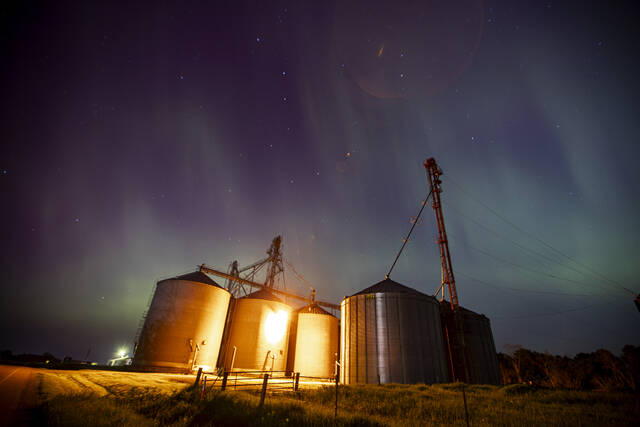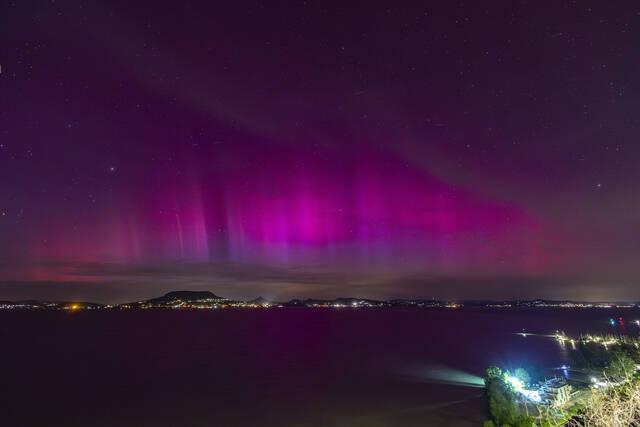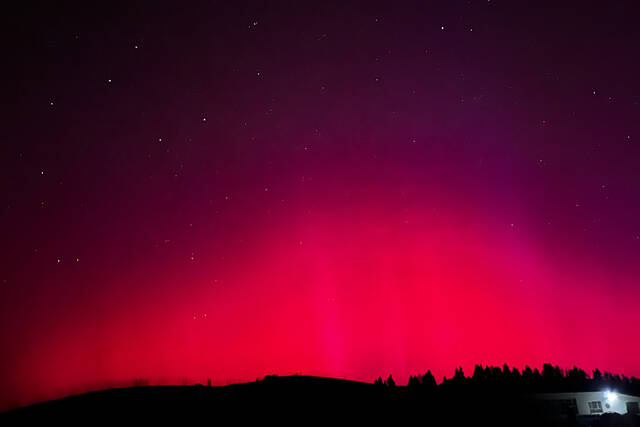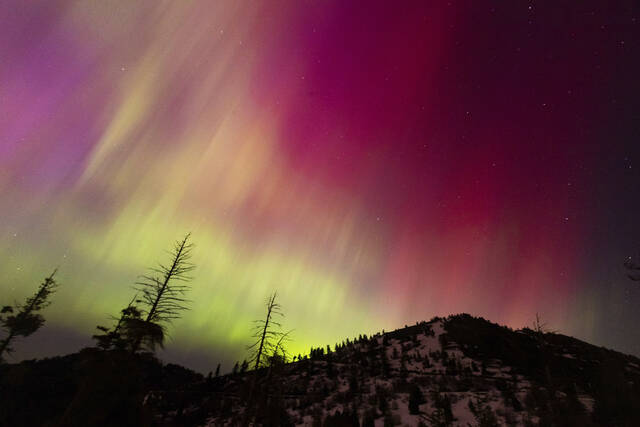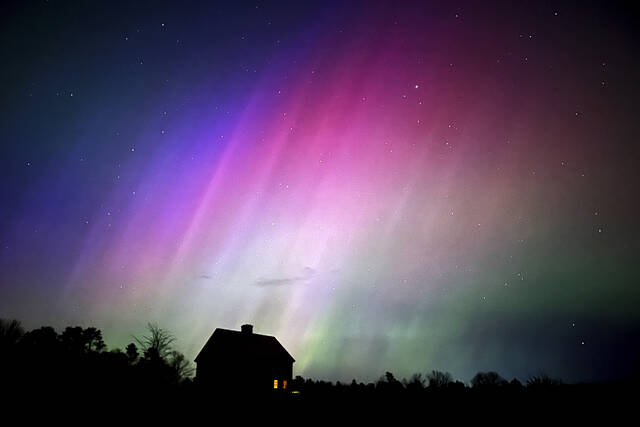Federal agency says a second, if weaker, solar storm surge is likely Sunday
A U.S. government agency said a weaker repeat of Saturday’s powerful solar storm was likely on Sunday.
The U.S. National Oceanic and Atmospheric Administration said that “coronal mass ejections” — clouds of ejected solar plasma that can cause power grid irregularities and issues with high-frequency communications and global positioning systems — will slam into the Earth’s magnetic field and outer atmosphere until at least Sunday night.
On Saturday, the powerful solar storm put on an amazing skyward light show across the globe overnight but caused only minor disruptions to the electric power grid, communications and satellite positioning systems.
A secondary peak in the current solar storms appears likely... pic.twitter.com/WMlbGKNfaB
— NOAA Space Weather Prediction Center (@NWSSWPC) May 12, 2024
The Federal Emergency Management Agency said that no FEMA region reported any significant impact from the storms. The U.S. Department of Energy said Saturday it was not aware of any impact from the storms on electric customers.
SpaceX’s Starlink satellite internet service said on its website Saturday that service had been degraded and its team was investigating. CEO Elon Musk wrote on the social platform X overnight that its satellites were “under a lot of pressure, but holding up so far.”
Brilliant purple, green, yellow and pink hues of the Northern Lights were reported worldwide, with sightings in Germany, Switzerland, China, England, Spain and elsewhere.
In the U.S., Friday’s solar storm pushed the lights much farther south than normal. The Miami office of the National Weather Service confirmed sightings in the areas of Fort Lauderdale and Fort Myers, Florida. Meteorologist Nick Carr said another forecaster who lives near Fort Lauderdale photographed the lights and was familiar with them because he previously lived in Alaska.
People in Kansas, Nebraska, Iowa, Michigan, Minnesota and other Midwestern states were able to capture photos of bright colors along the horizon.
Sunday night may provide another chance for many to see the spectacle.
Compilation of some of my favorite time lapses of the #NorthernLights outbreak this weekend. Just an awesome experience!
I always say prepare for disappointment with these solar storms, but this was one of the examples when everything goes right! pic.twitter.com/rvfOTCJjfp
— Nick Stewart (@NStewWX) May 12, 2024
NOAA issued a rare severe geomagnetic storm warning when a solar outburst reached Earth on Friday afternoon, hours sooner than anticipated.
The agency alerted operators of power plants and orbiting spacecraft, as well as FEMA, to take precautions.
“For most people here on planet Earth, they won’t have to do anything,” said Rob Steenburgh, a scientist with NOAA’s Space Weather Prediction Center.
“That’s really the gift from space weather: the aurora,” Steenburgh said. He and his colleagues said the best views may come from phone cameras, which are better at capturing light than the naked eye.
Snap a picture of the sky, and “there might be actually a nice little treat there for you,” said Mike Bettwy, operations chief for the prediction center.
The most intense solar storm in recorded history, in 1859, prompted auroras in central America and possibly even Hawaii.
So cool. On Saturday morning, CWG reader David Abbou took this video of the giant sunspot facing Earth (which you can see with solar eclipse glasses) and which has been responsible for the solar storms and northern lights. As he was recording, an airplane photobombed the shot! pic.twitter.com/N52dCzwjn5
— Capital Weather Gang (@capitalweather) May 12, 2024
This storm posed a risk for high-voltage transmission lines for power grids, not the electrical lines ordinarily found in people’s homes, NOAA space weather forecaster Shawn Dahl told reporters. Satellites also could be affected, which in turn could disrupt navigation and communication services here on Earth.
An extreme geomagnetic storm in 2003, for example, took out power in Sweden and damaged power transformers in South Africa.
Even when the storm is over, signals between GPS satellites and ground receivers could be scrambled or lost, according to NOAA. But there are so many navigation satellites that any outages should not last long, Steenburgh noted.
The sun has produced strong solar flares since Wednesday, resulting in at least seven outbursts of plasma. Each eruption, known as a coronal mass ejection, can contain billions of tons of plasma and magnetic field from the sun’s outer atmosphere, or corona.
The flares seem to be associated with a sunspot that is 16 times the diameter of Earth, NOAA said. It is all part of the solar activity ramping up as the sun approaches the peak of its 11-year cycle.
Remove the ads from your TribLIVE reading experience but still support the journalists who create the content with TribLIVE Ad-Free.


